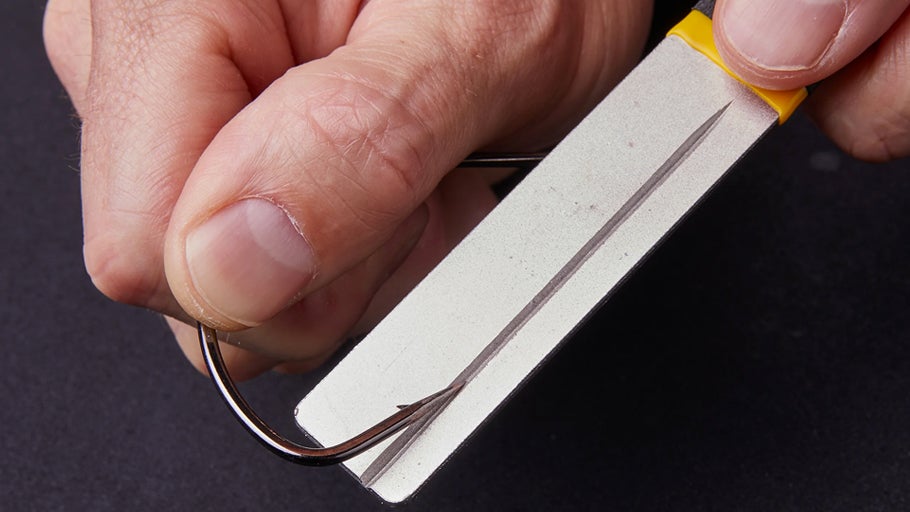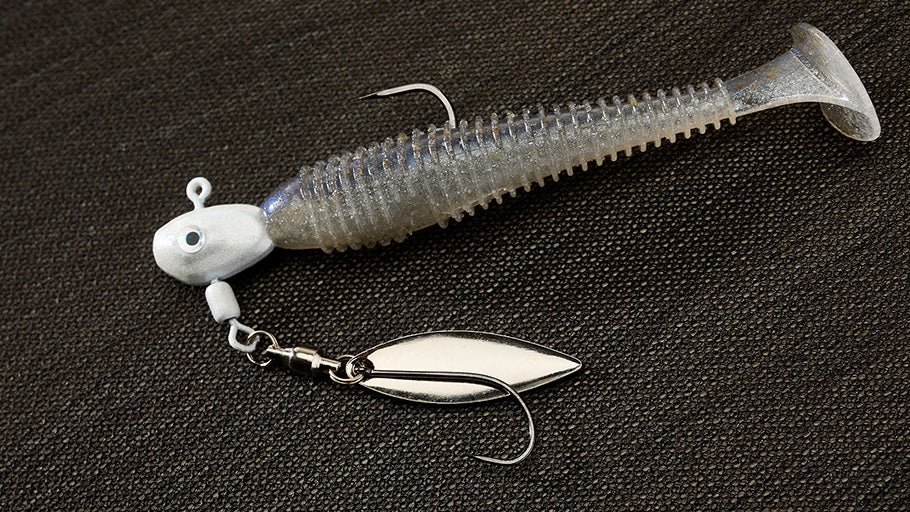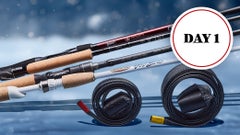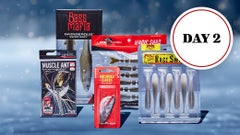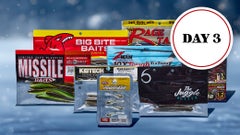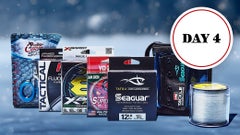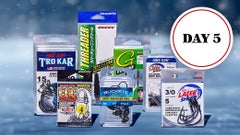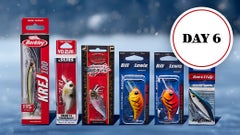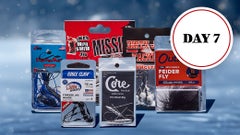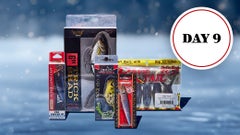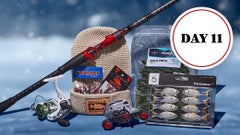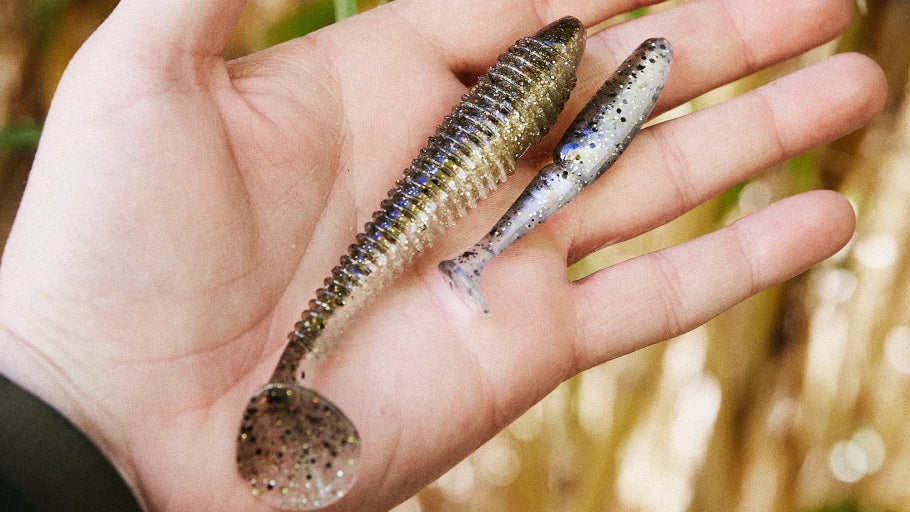
Underspin Gear Guide
Introduction
Effective year-round, the bladed prowess of an underspin shines brightest during the cooler months of the year yet offers anglers a reliable method to target bass in diverse range of conditions. Underspins have propelled their way to becoming a front-running lure choice, allowing anglers to wield it virtually anywhere, often paired with a soft-plastic swimbait or soft jerkbait for added action. Whether you’re probing the depths for suspended fish or skimming the shallows around cover, the underspin has proven itself from amateur circuits all the way up to the biggest stages in bass fishing.
Underspins create a less intrusive presentation compared to traditional spinnerbaits that entices bass through visual stimuli, making them excel in clearer water conditions when paired with the natural kicking motion of a swimbait. In this article, we'll provide an in-depth tackle recommendation for underspins, explore rigging methods, and offer up some helpful tips and tricks to get you started with this productive fishing technique and outwit the most discerning and seasoned bass.
Underspin Rods
When it comes to selecting the right rod length and rating for underspin fishing, most anglers typically reach for a rod that is between 6’10"-7’4” in length with a medium to medium-heavy power rating. This balance of length and power ensures sufficient sensitivity and backbone to handle the varying demands of underspin fishing, all the way from the shallows down to the twenty-foot plus zone. Anglers opting for finesse using smaller underspins in clear water, particularly when pursuing finicky bass suspended deeper, may find versatility in employing a spinning setup. Opting for a spinning rod with the same 7’-7’6” medium to medium-heavy rating offers enhanced finesse and control over your presentation, maximizing the potential for enticing elusive fish.
Underspin Reels
Selecting the appropriate reel for underspin fishing is equally vital in ensuring a seamless and effective presentation. For casting setups, a size 100-200 reel with a gear ratio of 6:1-7:1 is commonly recommended, as it provides enough line capacity for long casts and a casual retrieving speed that won't wash the bait out. Alternatively, anglers may opt for a 2500 size spinning reel when using underspins paired with spinning tackle—in deeper water, using a spinning setup allows your lure to get down quicker, as the line falls from a spinning reel faster than a bait caster in free spool.
Underspin Line
Most anglers typically use straight fluorocarbon on casting gear and braided line to fluorocarbon on spinning gear when fishing underspins. In clear water, fluorocarbon lines ranging from 10 to 14lb are preferred for their sensitivity and stealth, allowing for precise presentations and better strike detection. If fishing around heavy cover where fish are being elusive, consider using braid with a short fluorocarbon leader for added assurance in case a “biggun” makes a run towards the brush.
Underspin Modifications & Rigging
Adding a stinger hook provides an extra insurance policy against short strikes, increasing the chances of hooking up finicky bass who don’t want to commit to aggressively striking in cold water. Check out the video above to get a quick and easy rundown of the whole process!
Considering most underspins are in the $4-7 range and you only get one hook per jig head, we recommend keeping your hooks sticky-sharp by using a hook file to hone the point. This will increase your hookup ratio upon contact with the fish's mouth. In murky water situations, dying the tail or coloring it using a marker can significantly improve visibility, making the lure more visible to predators. Swapping blades is another way for anglers to experiment with different flash and vibrations beneath the surface, potentially triggering more aggressive strikes from fish relying on their lateral line to feed.
Underspin Tips & Tricks
Understanding the array of underspin options available on the market can feel overwhelming with the diverse assortment of head shapes and weights leaving even seasoned anglers scratching their heads. Like any bass fishing technique, successful underspin fishing hinges on the ability to tailor the setup to match the bass's aggression levels and prevailing conditions. During periods of heightened activity, such as when bass are biting fast and furiously before a pressure change, a faster retrieve is often more effective at triggering strikes, while adopting a subtle, more deliberate presentation can yield better results when the action slows down on chilly bluebird days.
The weight of the underspin head plays a pivotal role in determining presentation speed and duration within the strike zone. Opting for a lighter head, like a 3/16-ounce, enables a more leisurely reel speed, extending the lure's presence in the strike zone, which proves especially advantageous when targeting ultra-shallow suspended bass or sluggish fish in depths ranging from 5 to 10 feet. Clear water bass are often prone to short strike lures, which can be costly due to damaged soft plastics; prolong lure lifespan, applying super glue to the front of the trailer enhances longevity and reduces the need for frequent replacements.
Underspin Colors
Selecting the correct color for underspins can significantly improve their effectiveness in provoking strikes from predatory bass. In clear water, bass rely heavily on visual hunting. Mimicking small baitfish such as natural shad, bluegill, or translucent minnows can be highly effective, increasing the chances of triggering strikes from pressured bass. Conversely, in stained or murky water, brighter and more vibrant colors like chartreuse, white, or firetiger can enhance visibility, making the lure stand-out to bass feeding in compromised visibility. Additionally, experimenting with contrasting colors on the underspin head and trailer can create visual appeal and trigger reactionary strikes from curious or aggressive bass. By understanding the role of color in underspin fishing and adapting choices to match water clarity and bass behavior, anglers can optimize their odds of success on the water.
Final Thoughts
The next time you’re faced with tricky cold-water conditions and fish that don’t want to commit, tie on an underspin and see if you can’t match the hatch to trigger some wary bass to strike. Implementing different colors, retrieval speeds, and trailers will often lead you to the best patterns and results, providing another tool in your arsenal when the bass are playing hard to get.
Related Content

